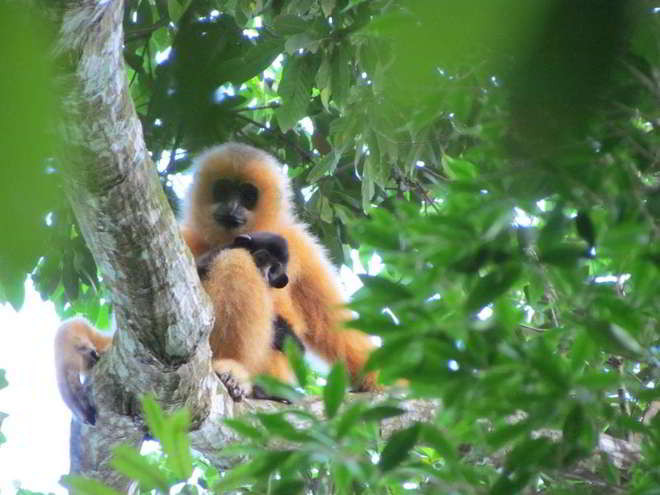Hainan gibbon: Renewed efforts to save world's rarest, endangered primate

Experts are calling to save the first ape species that could potentially be wiped out by human activity — the critically endangered Hainon gibbon population.
Numbering just 25 individuals, the gibbon found in China's Hainan island spanning 20sq km, is one of the rarest animals in the world. The surviving population contains a mere three social groups, in which male and female gibbons sing duets with each other at dawn.
The gibbon is considered an 'umbrella species', with measures taken to safeguard it also protecting the wider ecosystem of the island.
An international team of more than 100 scientists, policy makers and community representatives, led by international conservation charity the Zoological Society of London (ZSL), published a new report outlining the vital steps needed to save the Hainan gibbon (Nomascus hainanus) from extinction.
The report identified over 40 key actions needed including enhanced monitoring systems, creating canopy bridges between forest fragments to expand their habitat range, and limiting disturbance by people in forested areas.
Dr Samuel Turvey, Senior Research Fellow at ZSL, who co-chaired the major international conservation planning meeting in Hainan that produced the report, said: "Ensuring a future for the Hainan gibbon is one of the most important global priorities in mammal conservation. If the right steps are carried out now, it's not too late to save this incredible species. I hope that the Hainan gibbon will be used in the future as an example of a conservation success story."
The gibbons that originally lived mainly in lowland forest, have been driven to a higher altitude thanks to widespread logging.
The move has not been to their advantage, believe some experts who think the new territories do not provide an adequate year-round supply of the fleshy fruits the gibbons like to eat.
Usually, gibbon groups comprise one male and one female who bond for life, along with one or two offspring.
Professor Long Yongcheng, head of the IUCN's China Primate Specialist Group, said: "The Hainan gibbon is an indicator of good forest health and ecological stability, and so protecting the species also helps to conserve Hainan's environment and its international green image."
There were more than 2,000 Hainan gibbons in the 1950s. Hunting and loss of habitat brought that number down during the late 20th century, with about 30 gibbons recorded in the 1980s.
Protected under the Chinese law, a lack of connected forest habitat to allow expansion of their population threatens to wipe out the entire tiny population in an outbreak of any disease.
Bosco Chan, a specialist in Chinese conservation at the Kadoorie Farm and Botanic Garden in Hong Kong told Nature that in 2003 there were only 13 individuals. To that extent, there is visible progress from the conservation efforts.
The endangered Hoolock gibbon found in Bangladesh, Myanmar, China and in small pockets of northeastern India has also been a victim of hunting and fragmented habitat. Their numbers too are low and are around a few hundreds.
© Copyright IBTimes 2025. All rights reserved.





















